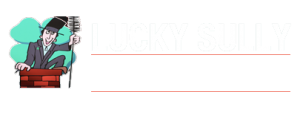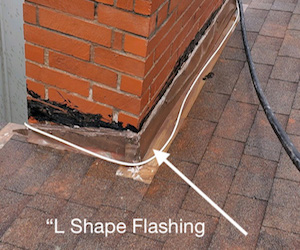How to Spot and Stop Chimney Leaks Before They Wreak Havoc
Chimney leaks are more than just a minor inconvenience; they can lead to costly repairs, water damage, and even mold growth if left unaddressed. A leaking chimney can wreak havoc on your home’s structure and integrity. In this guide, we’ll explore how to spot and stop chimney leaks before they spiral out of control. Whether you’re a homeowner with a chimney in need of maintenance or you’re just looking to learn more about chimney care, this guide will help you recognize the warning signs and take preventive measures.
At Lucky Sully Chimney Sweep, we specialize in identifying and fixing chimney leaks to ensure your home remains safe, dry, and free from damage. From damaged flashing to cracked crowns, we’ve got the expertise to address a variety of chimney leak issues. By understanding the causes, symptoms, and solutions for chimney leaks, you’ll be better equipped to prevent major damage.
What Causes Chimney Leaks?
Before you can understand how to prevent chimney leaks, it’s important to know what causes them. Leaks happen when water infiltrates the chimney structure, and they can occur for several reasons. Let’s take a closer look at the most common causes of chimney leaks:
Cracked Chimney Crown
The chimney crown is the protective cap at the top of your chimney. It’s designed to prevent water from entering the chimney, but over time, it can crack or degrade due to weather exposure. When the crown is cracked, rainwater, snow, or ice can seep into the chimney structure, causing significant damage. Cracks in the crown can lead to water accumulating inside the chimney, eroding the mortar and rusting metal parts.
Faulty or Missing Chimney Cap
The chimney cap is an essential component that prevents water, debris, and animals from entering the chimney. If the cap is damaged, rusted, or missing, it creates an opening for rainwater and snow to enter the chimney, leading to water accumulation inside. This can create dangerous conditions that promote mold growth and damage your fireplace or chimney system.
Worn-Out Flashing
Flashing is the metal seal that connects your chimney to the roof. It is designed to prevent water from leaking into the chimney at the junction where the roof and chimney meet. Over time, flashing can deteriorate due to weathering, or it may have been improperly installed. A leak around the flashing is a common cause of water damage in your chimney.
Deteriorating Mortar Joints
Mortar joints are the spaces between the bricks or stones in your chimney. Over time, the mortar can deteriorate from exposure to water, freezing temperatures, and other environmental factors. If the mortar joints become cracked or weakened, water can seep into the chimney and cause damage to the masonry. This can lead to further structural issues if left untreated.
Signs Your Chimney is Leaking
Chimney leaks are often subtle at first, so it’s important to keep an eye out for signs of water damage. Here are the most common warning signs that your chimney is leaking and needs immediate attention:
Water Stains on Walls or Ceiling
Water stains or discoloration on the walls or ceiling around your chimney are one of the most common signs of a chimney leak. These stains usually appear as dark patches that spread over time as the leak persists. If you notice water stains, it’s a good idea to schedule a professional inspection to pinpoint the source of the leak.
Rust Around the Firebox
Rust is a sign that water is present inside your chimney system. If you see rust around the firebox, damper, or other metal components of the chimney, it’s a clear indication of water infiltration. Rust can lead to deterioration of the chimney’s internal components, which could affect the safety of your fireplace.
Mold or Mildew Growth
Mold and mildew thrive in damp environments, and a leaky chimney can create the perfect conditions for these harmful fungi to grow. If you detect a musty smell near the chimney or notice visible mold, it’s likely that water has been entering the system. Mold can spread quickly, damaging the chimney and creating health hazards for your family.
Crumbling Mortar or Brickwork
Crumbling or cracked mortar joints between the bricks is another sign of a chimney leak. As water seeps into the chimney structure, it can weaken the mortar and cause it to break down. If you notice loose bricks or deteriorating mortar, it’s crucial to address the leak before it causes more extensive damage to the chimney and surrounding areas.
Water in the Firebox
If you notice water pooling in the firebox after heavy rainfall or snow, your chimney is likely leaking. This is a serious issue that can damage the firebox and lead to more severe structural problems if not addressed quickly. A leaky chimney cap or damaged crown may be the cause of water entering the firebox.
How to Prevent Chimney Leaks
The good news is that chimney leaks are preventable with proper maintenance and care. Here are a few proactive steps you can take to prevent leaks from occurring:
Regular Chimney Inspections
Regular chimney inspections by a professional are the best way to spot potential leaks before they become a problem. During an inspection, a chimney sweep will assess the condition of your chimney cap, crown, flashing, mortar, and other components to identify signs of wear and tear. Early detection allows for timely repairs that can prevent leaks from worsening. Be sure to schedule annual chimney inspections with a trusted expert like Lucky Sully Chimney Sweep to keep your chimney in top condition.
Repair Cracked Chimney Crown
If you notice cracks or damage to your chimney crown, it’s essential to repair it immediately. A cracked crown is one of the leading causes of water infiltration in chimneys. Professionals can patch up minor cracks or replace the crown entirely to ensure that it continues to protect your chimney from water damage.
Fix or Replace Flashing
Damaged or improperly installed flashing is another common cause of chimney leaks. If your flashing is rusted, cracked, or loose, it’s important to replace or repair it. A professional chimney service can ensure that the flashing is properly sealed to prevent water from entering the chimney.
Install a Chimney Cap
A chimney cap is an essential protective feature that prevents rain, snow, and debris from entering the chimney. If your chimney is missing a cap or if the existing cap is damaged, it’s time to replace it. A well-installed chimney cap will prevent most forms of water infiltration and keep debris from clogging the flue.
How Professional Chimney Services Can Help
If you’re dealing with a leaky chimney, it’s important to rely on professional services to ensure that the problem is fixed properly. Lucky Sully Chimney Sweep specializes in Leaky Chimney Repair services and can help you prevent further damage to your chimney and home. Our team of certified chimney experts has the tools and experience to inspect, repair, and maintain your chimney to keep it functioning properly for years to come.
We can help you address common issues such as cracked crowns, damaged flashing, and deteriorating mortar joints. Our expert services will ensure that your chimney is watertight, safe, and ready for use, preventing leaks and the damage they can cause.
Conclusion
Chimney leaks can cause significant damage to your home if left unchecked, but with regular maintenance, early detection, and prompt repairs, you can prevent costly issues from arising. By understanding how to spot and stop chimney leaks, you’ll be able to keep your chimney in excellent condition and avoid water damage that could affect your home’s structure and safety. Don’t wait for leaks to cause havoc—act now and ensure your chimney is ready for whatever weather comes your way!
FAQs
How do I know if my chimney needs repairs?
Signs of chimney issues include water stains, rust, mold growth, crumbling mortar, and water in the firebox. If you notice any of these, it’s time to schedule an inspection.
How often should I have my chimney inspected?
It’s recommended to have your chimney inspected at least once a year, especially before winter, to ensure it’s safe and in good condition.
Can I fix a chimney leak myself?
While small issues like clearing debris can be handled on your own, major repairs—such as fixing flashing or repairing a cracked crown—should be left to professionals.
What’s the cost of repairing a leaky chimney?
The cost of repairs depends on the severity of the damage. A simple fix may cost less, while more extensive repairs, like replacing flashing or crowns, can be more expensive.
Can chimney leaks cause health problems?
Yes, prolonged exposure to mold caused by water infiltration can lead to respiratory issues and other health problems, making early detection and repair crucial.









